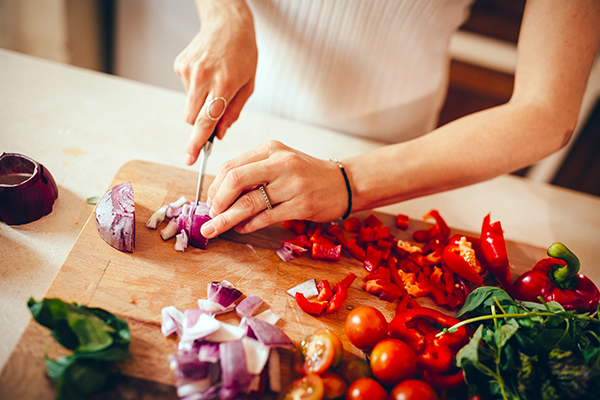What to Know About an Elimination Diet

You eat plenty of nutrient-dense whole foods, limit treats, and drink your water. You feel like your nutrition is dialed in, yet you’re still dealing with unsavory GI side effects, like gas, bloating, and feeling “off.”
What gives?
After talking with your doctor to make sure there’s nothing serious happening, it might be time to try an elimination diet to pinpoint what’s going on in your gut.
“An elimination diet is a protocol of taking a group of foods or ingredients out of one’s diet, then reintroducing them in order to determine a reaction to that particular food,” explains gut health expert Erin Judge, R.D.N., owner of Gutivate, which offers nutritional counseling to those dealing with digestive issues.
Read on to learn what you may and may not want to include on an elimination diet and what it can teach you about your digestion.

What’s the Purpose of an Elimination Diet?
“Someone would choose to do [an elimination diet] if they suspect they are reacting, either with digestive symptoms or allergy-like symptoms,” says Judge.
Elimination diets can identify both allergens (like soy, wheat, dairy, etc.) and food sensitivities, she explains.
The purpose is to give you answers about your digestive woes, so you feel your best after you eat.
What to Expect From an Elimination Diet

Similar to a cleanse, an elimination diet has two phases: elimination and reintroduction.
“You’ll go through a period of removing certain foods from your diet,” explains Natalie Welch, M.S., R.D.N.
“After that period ends, you will add foods back, if you so choose, to determine if any of them may be the culprit of your gut distress.”
Elimination diets aren’t the time to set goals at the gym or try to keep up with your usual fitness routines.
“Go slow, support your body as you go, and keep a lot of data through a log,” suggests Judge.
The benefits of a cleanse focus more on resetting habits than targeting digestive triggers.
Sometimes, that means removing an otherwise “healthy” food from your diet because it doesn’t make you feel good.
What you should and shouldn’t eat will depend on the type of diet – a registered dietitian nutritionist can help you plan your meals so you don’t go hungry or feel overly deprived.
But since you’re limiting the variety in your diet, “it’s crucial to maintain balanced nutrition,” advises Welch. “It’s wise to have a nutrient-dense daily safety net like Vegan Shakeology to help meet your needs.”
A program like Autumn Calabrese’s 4 Week Gut Protocol can help identify and isolate food triggers. “It’s designed to help support and improve gut health which in turn can help to improve your overall health,” Welch explains.
The 4 Week Gut Protocol “gets to the bottom of what may be causing your GI issues,” she adds. “It builds body autonomy in the process as you get to know what makes you feel your absolute best, and what potentially doesn’t. With this information you can choose what to eat and how to move your body every day, to live your healthiest life.”
